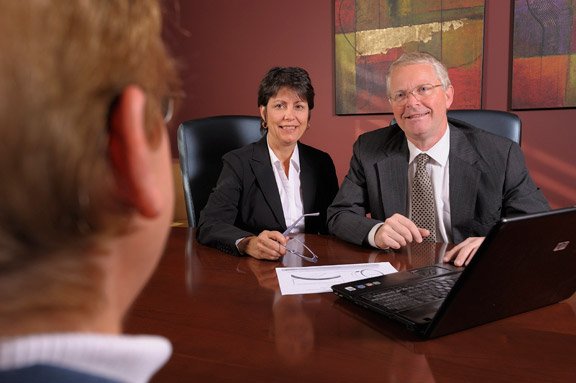 Hartman Global IP Law, in Valparaiso, has been helping creators and inventors to get their ideas out into the real world through patents since 1990. Hartman Global can help take your idea or invention and turn it into a marketable product through their expertise of patents and patent law.
Hartman Global IP Law, in Valparaiso, has been helping creators and inventors to get their ideas out into the real world through patents since 1990. Hartman Global can help take your idea or invention and turn it into a marketable product through their expertise of patents and patent law.
“If you were to walk into our office with a new invention, and that could be a thing, a method, or a new design, the first thing we would tell you is to do a patentability search,” said Domenica Hartman, Hartman Global Intellectual Property Law owner.
“What is the state-of-the-art? That’s what we’re looking for,” Hartman said. “When somebody gets a patent, what we are referring to, 90% of the time, is a ‘utility patent.’ It covers the utility of the device or the thing - that’s kind the ‘Holy Grail.’”
Once you receive the patent you have the exclusive rights to exclude other people from making, using or selling your invention. This is a very profound step when looking to get your invention patented.
“Obviously, it can be very lucrative,” said Hartman. “It’s a very positive step towards getting that patent.”
“To give you an example - If you were that first caveman who was tired of eating on the floor or in the mud, and you took a boulder and put a horizontal surface on it that would have been the first table. A ‘utility patent’, if it’s drafted well by a patent attorney, is basically going to claim this table but it’s going to be as broad as saying, ‘a horizontal surface supported by some means.’ Therefore the horizontal surface could be round, square, slate, mahogany or anything you want.”
The support of that horizontal surface could be one boulder, two pedestals or four legs, whatever you want, but that’s ultimately what you want, the utility patent that covers the utility of the device.
There are two main hurdles that must be overcome in order to obtain a patent. First, the idea must be brand new.
“We’ll have clients who come in and say, ‘well I don’t see that on the shelf at Walmart or I’ve never seen this anywhere,’” said Hartman. “But it doesn’t matter. If someone came up with the idea before but never did anything with it, it doesn’t matter. It’s kind of a black and white analysis.”
Second, the new idea cannot be an obvious improvement of something that already exists.
“To go back to the example of the caveman, if you had said, ‘we’re using this slate and baby caveman is hurting himself when he bends over so let’s bevel the edge.’ That would have been obvious because you’re beveling the edge for safety and that’s an obvious improvement.”
“On the other hand, if you had said, ‘instead of that boulder, we’re going to put four legs and we’re going to have those legs fluted at the bottom so they really give us stability, so the table isn’t rocking,’ that probably wouldn’t have been obvious.”
Whether an invention is new or not is a pretty black and white analysis while the obviousness tends to be shades of gray. After the patentability search, Hartman Global will be able to determine whether or not the idea that the inventor has come up with is new or obvious.
Because the process of filing for a patent is long and can be very expensive, the patent office allows for the filing of what is called a ‘provisional patent application.’
“It’s an excellent way for individuals to get started with the process,” Hartman said. “The cost is about ¼ of the utility patent because the provisional patent application is not examined by an examiner so we don’t have to put in all the details that are required.”
“The beauty of the provisional patent application is that, first, it clearly establishes your priority date to that invention. It says that as of, such a date, this idea belongs to you. Now you can go talk to manufacturers, designers, financiers or whoever you need to talk to and it’s clear that you’re bringing the idea.”
The provisional patent allows the inventor to say ‘patent pending’ on the invention, and it lasts for 12 months. After one year you can decide whether or not the invention is worth pursuing a utility patent on or you can file for another year of provisional patent protection which allows you to continue to develop the invention.
“It’s a wonderful vehicle (provisional patent) to start the process, particularly for small companies and individuals,” Hartman said.
To find out more about how Hartman Global IP Law could help you get your invention off the ground, visit their website at: www.hartmanglobal-ip.com/
